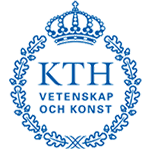Things You Are Likely to Face as A New Student in A PBL Class Challenges

Things You Are Likely to Face as A New Student in A PBL Class Challenges
As Ghanaians, before anyone gets to the University he/she might have gone through the Ghanaian educational traditions and systems for at least 10 years. These experiences are in terms of the understanding of the learning method, teacher-student relationship, examination methods, etc. Many students and staff who experience PBL for the first time find it difficult to understand the philosophy characterizing it. Problem-based learning (PBL) highlights problem-solving, critical thinking, active and self-directed learning, self-management, and collaborative learning. It requires time for new students to understand the idea of learning with problem orientation and project organization and the fact that students need to take the responsibility to manage their learning instead of passively receiving instruction from an instructor.A major characteristic of PBL is its Project component done through student groups. As a result, students are supposed to work in groups to solve a particular problem. Though working in groups has its advantages, it can be difficult for new students exposed to it for the first time to understand that group work can be an efficient way of learning. What we have been exposed to is the culture where competition is highly encouraged and individual achievement is greatly valued in an assessment and therefore group work is normally not seen as a way to compete. For instance, in the PBL approach, the creation of knowledge can come from everybody’s participation and information sharing but the student is used to the teacher-centered method. As a result of these differences, many students have diverse perceptions of the group-based assessment. New students are faced with the following thoughts as they happen in group work assessment. Some feel it is not fair to get the same exam score though in the same group since different tasks are performed. Similarly, some feel they worked better and presented better project results than other groups that did something less but got lower scores due to criteria used by different examiners.
Others think individual accomplishment is not seen and does not see the benefits of collaborative learning if future workplaces seem to value individual capabilities. In most cases, group members are made of people from different backgrounds such as ethnicity, race, religion, gender, age, etc., and thus affect people’s ways of thinking and communicating. Easily seen differences are revealed in the behavioral patterns, punctuality, means of conducting meetings, and how to deal with disagreements. In the PBL approach, supervisors facilitate as opposed to the traditional teaching method. New students mostly get confused by supervisors’ facilitating questions when they are used to something otherwise and expect precise instruction. In our first supervisor meeting, a similar incident occurred where the supervisor made some suggestions but the group members ignored some of them and it was overwhelming because we (Mathew & Emmanuel ) were not sure it was right to ignore the supervisors’ suggestions and whether the supervisor would not be offended if his suggestions are ignored. As a new student experiencing the PBL approach of teaching for the first time, you are likely to face the stated challenges and something similar but relax as we take you through how to overcome them in our next post. Stay tuned.Thanks for reading
Our Partners






